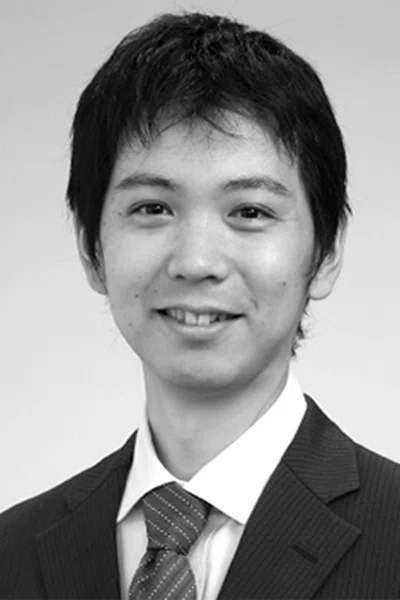result
∗Technology in development that represents ongoing research and development efforts. These technologies are not products and may never become products. Not for sale. Not cleared or approved by the US FDA or any other global regulator for commercial availability.
∗Technology in development that represents ongoing research and development efforts. These technologies are not products and may never become products. Not for sale. Not cleared or approved by the US FDA or any other global regulator for commercial availability.


PREVIOUS
${prev-page}
NEXT
${next-page}
Subscribe Now
Manage Subscription
FOLLOW US
Contact Us • Cookie Preferences • Privacy Policy • California Privacy PolicyDo Not Sell or Share My Personal Information • Terms & Conditions • Security
© 2024 GE HealthCare. GE is a trademark of General Electric Company. Used under trademark license.
MR continues to advance during a year of adversity
MR continues to advance during a year of adversity
One year after COVID-19 upended our professional and personal lives, there is much optimism that we are nearing the end of this pandemic. The rapid rollout of vaccinations worldwide and continued decrease in COVID-19 hospitalizations and deaths are fueling confidence that we have turned the corner on this virus. But it’s not over yet, as evident by the fact ISMRM will be held virtually again in 2021.
In addition to the adversity that we’ve endured this past year, there have also been incredible advancements, such as the novel science using messenger RNA to develop the COVID-19 vaccines. In our own corner of the world in MR imaging, we continue to see new technologies changing the way we practice and enabling new insights into the body. Take for instance the emerging role of MR in following Long COVID patients who are suffering the debilitating effects of this virus long after their initial infection and, in some cases, developing new health issues. This issue of SIGNA™ Pulse of MR features: an article on the use of hyperpolarized xenon gas imaging∗ to identify lung disease in Long COVID patients at the Universities of Oxford, Sheffield and Nottingham in the UK; a cardiac MR case study of a patient post-infection from King Fahad Military Medical Complex in Saudi Arabia; and an article with IMV on the impact of COVID-19 on MR imaging and operations in the US in 2020.
Another area of rapid clinical progress is PET/MR, an exciting field with much potential both in research and clinical use. PET/MR is advancing our knowledge of neuro disease and in this issue we share the work of Professor Xaoli Lan from Wuhan Union Hospital in Parkinson’s disease, Alzheimer’s disease and vascular dementia. Dr. Artur Coutinho and Dr. Mateus Aranha provide their insight into chronic traumatic encephalopathy (CTE) featuring an interesting case of a retired soccer player.
Deep-learning (DL) technologies continue to make inroads in healthcare. An entire section of this issue is dedicated to AIR™ Recon DL, GE Healthcare’s DL-based reconstruction technique that improves SNR and produces noticeably sharper and less noisy images. The experiences of numerous clinicians, including myself, are detailed in five articles from Kofu Kyoritsu Hospital, Keio University Hospital, Inje University Haeundae Paik Hospital, Osaka University Hospital, RadNet, Fairfax Radiology Centers, radiomed and Houston Medical Imaging. Be sure to catch the ISMRM abstracts for some of the latest science using this innovative technology that I believe will become the standard reconstruction technique in the near future. DL is not only useful, but I also believe mandatory for the future of image reconstruction.
Neuroimaging is certainly a common theme this issue, and we’re excited to share with you the work being done at Hull University after a SIGNA™ Premier Lift – taking an existing 3.0T magnet and equipping it with the latest advancements in MR imaging. We are also showcasing quantitative susceptibility mapping (QSM)∗, being developed by Dr. Yi Wang at Cornell University. Dr. Wang believes the combination of QSM and 7.0T MR holds great potential for advancing the fields of neurology, neuroradiology and neurosurgery. Finally, our case studies this issue all revolve around this same common theme of neuroimaging.
Of course, no issue of SIGNA™ Pulse of MR would be complete without a focus on liver imaging. It’s not that I’m biased… but the potential for non-invasive techniques such as LiverMultiScan® to help identify liver disease at its earliest stage using MR imaging is crucial for combating a global health issue.
I hope you enjoy reading this issue of SIGNA™ Pulse of MR and I look forward to working with the editorial team in 2021 to bring more news of the advancements in MR imaging to you.
Utaroh Motosugi, MD, PhD
Kofu Kyoritsu Hospital
Yamanashi, Japan
Utaroh Motosugi, MD, PhD
Kofu Kyoritsu Hospital
Yamanashi, Japan









